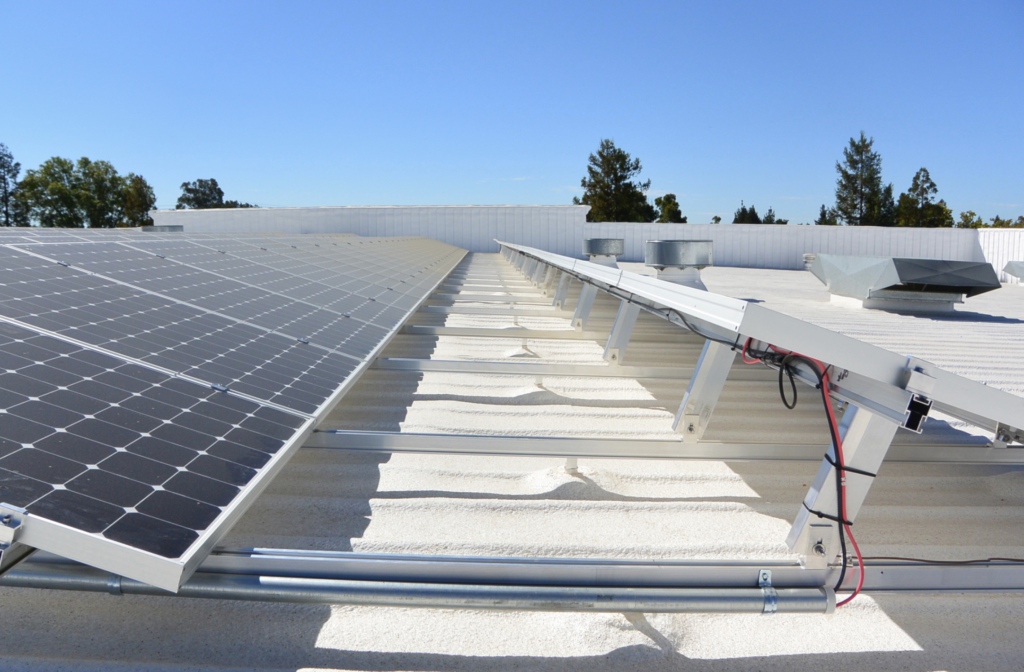
Not too long ago, sustainable roofing and building was simply a novel concept. Though achievable, it proved far from financially feasible for builders and developers who simply couldn’t command the pricing it then required, giving them little ability to offer it in any standardized way. However, the last two decades have been marked by substantial material advances as well as the dramatically increased adoption of those materials. Customer awareness and demand, in both the residential and commercial sides of the business, along with tax incentives, green building finance programs, corporate sustainability initiatives, certifications, and a dramatic shift in consumer awareness of environmental impacts and ways to reduce them, are all now contributing to improved ROI in earth-friendly roofing and structures.
Today, sustainable roofing and construction are far from unique. The financials have evolved and it’s now feasible from a budget perspective to build with materials that protect the environment. Not only that, it’s simply good for business in many ways. Here’s why.
Resilient Roofing Materials Are in Higher Demand
As storms and inclement weather conditions increase in both frequency and magnitude, demand for resilient roofing materials, for both re-roof and new construction applications, are growing dramatically.
The United States has experienced a series of formidable weather events the past few years. Notably, the 2017 Atlantic Hurricane Season will long be remembered as one of the most prolific and disastrous on record, with Hurricane Maria’s decimation of Puerto Rico; Maria and Irma’s extensive damage incurred in the Virgin Islands; Hurricane Harvey’s brute strength, rainfall and destruction as a cyclone over Texas, Louisiana and the Tennessee and Ohio Valleys; and others. The same year, California’s years-long drought and heat wave continued, culminating in prolific destructive wildfires. In September 2018, the Southeast was hit with Hurricane Florence, which caused catastrophic damage and deaths in the Florida panhandle and the Carolinas, primarily as a result of freshwater flooding. In 2019, the longest running drought in California since the U.S. Drought Monitor began and lasted well into the spring. Hurricane Dorian hit the Bahamas with record-breaking maximum sustained winds of 185 mph then reached a Category 5. In the third quarter of this year, California’s wildfires wreaked record damage in the state and extended north, bringing severe damage in Oregon and Washington.
Roofing materials designed to provide the customer with a much better shot at withstanding harsh weather events such as these offer longer lifespans — one important determinant of sustainability — than those that don’t. As the industry shifts towards focusing on manufacturing and installing products with resilience capabilities, it will better meet customer demand while simultaneously encouraging the longevity of roofing products.
Consumers and Businesses Want to Reduce Environmental Impacts
Like many other types of products, construction materials and technologies have advanced tremendously over the past decade and become more sustainable. In roofing specifically, the environmental focus has shifted toward energy efficiency. As product advancements and benefits have grown, manufacturers have ramped up marketing, highlighting innovation and sustainability benefits. Undoubtedly, consumers, businesses and investors are now all increasingly calling for a meaningful reduction in the environmental impacts of their homes and structures, with roofing being a key component of this. Whether a manufacturer, contractor or builder, this demand across key audiences cannot be ignored if you want to run a successful business today.
Efficient Buildings Contribute to Energy Independence
The roofing and construction industries’ collective move toward energy-efficient building has been occurring over the past several years with significant momentum. Improved indoor comfort, reduced environmental footprint and long-term energy savings are regularly touted as legitimate benefits of energy efficient roofing. Yet there’s another aspect of this story not often discussed — energy independence. The direct link between roofing materials that conserve large amounts of energy, and therefore dramatically reduce fossil fuel use, is real and can be measured. However, a gap still exists in the average consumer’s understanding of this link. At the same time, there’s a strong national desire for energy independence.
If the industry comes together to better educate customers on the direct relationship between high-performance roofing materials and reduced fossil fuel burning, we can encourage energy independence as a core advantage. This will benefit customers, business, and the Earth, while encouraging a stronger roofing industry and overall economy.
Recycling Can Fuel Manufacturing
The use of recycled materials in the manufacturing of roofing materials is on the uptick, as seen across different material categories. One of the newer developments in recycled materials is the diversion of plastic water bottle waste, otherwise destined for landfills and the oceans, into the manufacturing of spray polyurethane foam roofing materials. One key result is that less of the harmful plastic will negatively impact our treasured marine species and our food sources. However, another is positive bottom line impacts to business as the waste has become a consistent material source for manufacturing.
While everyone is likely to agree that environmentally conscious roofing is the responsible choice for the Earth and future generations, it’s become much more than that. It’s now what customers want and it opens the door for new ways to source materials. Understanding the full scope of opportunities is paramount to not only remaining relevant, but to growing your roofing business.
About the author: Dave Feitl is VP Global Roofing and Western USA SPF Sales of Huntsman Building Solutions, a global provider of high-performance spray polyurethane foam and coatings. For more information, visit www.huntsman.com.



Be the first to comment on "Sustainable Roofing Doesn’t Just Benefit the Earth, It’s Good for Business"